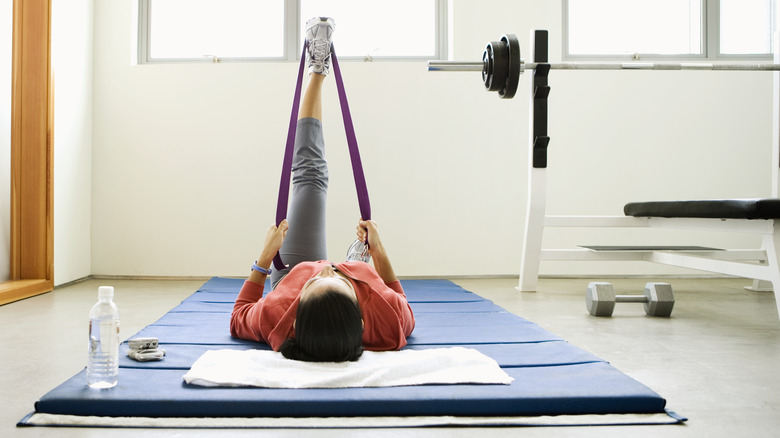How To Protect Your Back When Lifting Weights
It seems like every healthcare professional, book, blog, and website recommends exercising for better health. The encouragement to exercise is plentiful, however, the specifications on how to do so to avoid injury are not as abundant. Figuring out what to do is the first step, and then, often the more daunting one is figuring out how to do it safely. We're here to help. For those of you interested in weight lifting specifically, whether you're completely new or looking to double-check your form, understanding how to protect your back while lifting is crucial.
Each exercise that involves weights is an opportunity to strengthen your back or injure it. Obviously, we want to aim for the former. Something as small as paying attention to how wide your stance is or how often you're breathing can add up. Shifting form and adding a warm-up and cool-down that aims to stretch your back can make all the difference. Knowing what happens to your body when you weight lift is also important in understanding what results you want to get, and what your body's limits are.
Tips for your workout
Before you pick up a weight, start off with a warmup. The warmup raises your body's temperature, elongates your muscles, and prepares your body for the main workout. Taking a 5-minute walk, or alternating between squats and lunges is a great way to start. That also brings us to our next point, form. Whether you're squatting as part of the warm-up or with weights in hand, your form is important when it comes to preventing back injuries. Most exercises with weights require your legs to be shoulder-width apart.
Ensure that you are balanced and that your weight is evenly distributed in both legs. Pay attention to your posture. Is your back straight and neutral? It should always be when lifting weights — this includes when selecting them and putting them away. Engaging your core is another must when it comes to proper form. You'll find that this goes hand in hand with ensuring your back stays straight.
With all this in mind, it's easy to forget to breathe. When you hold your breath, your muscles get tense because they're not getting the oxygen they need. Focus on exhaling while exerting strength and inhaling while releasing: A steady breath may help with steady movement. Moving through the exercise slowly and steadily with proper form requires patience. It may be tempting to rush through a workout, especially if you have limited time, but doing so leaves more room for injury.
Don't forget the cool down
After your workout, don't forget to cool down. This period of gentle movement and static stretching is crucial for building flexibility and muscle recovery. Understanding what happens to your body while stretching can make it easier to convince yourself to do it after your workout. Some skip it because it can feel time-consuming, but recognize its usefulness.
During your workout and even your cooldown, respect your limit. Challenge yourself but do not strain. This is especially important in preventing back injuries and injuries in general. "Just because you can do something doesn't mean you should or that your body's ready for it," Nike+ trainer and USATF-certified track-and-field coach Joe Holder told Vogue. "If you hop into something too quickly, if the stimulus is too intense, it often results in an injury, because your body just doesn't know how to handle it."
If you're uncertain about your form or if you're causing strain instead of challenge, you can always ask one of the employees or trainers at the gym. For new weight lifters, it could be helpful to hire a personal trainer to ensure that you're learning the proper form. Be patient with yourself. Remembering these tips might seem overwhelming at first, but the more you go over them and incorporate them, the more they'll become like muscle memory in your workouts.


